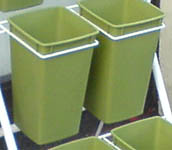his post is a continuation of the
4 xxxx meme...
The first car I ever owned was an
EH Holden. My friend Tony and I were travelling in Australia in 1980 and wanted to drive through the outback, so we bought the car in Sydney and set off to Melbourne and Adelaide via the
Twelve Apostles, then northwards into the desert. We visited some wonderful places -
Ayers Rock,
Mt Olga,
Simpson's Gap and
Stanley Chasm.
The most dramatic episode happened when we were driving without a windscreen. In those days, the road between Adeleaide and Alice Springs was just a dirt track, so car wheels sent stones flying, which was particularly dangerous when you were being overtaken. One such stone smashed our windscreen, so we stopped to punch out the glass. I think I was driving when it happended, but Tony took over when we set off again.
I don't remember who first spotted the two large birds standing on the road ahead. I'm sure they were some kind of eagle, but we'll never know. They watched us approach but didn't move until we were very close. They eventually started to fly up, but we were so near by that stage that I was convinced they wouldn't clear the car in time and would be scooped in through the glassless windscreen. I didn't like the idea of two suddenly irate birds of prey struggling inside the car, so I reached for the door handle, ready to leap out of the still-moving car.
This all happened in just a few seconds, but it seemed much longer before Tony stamped on the brakes, and we stopped just short of the birds who continued to flap slowly away, annoyed at being forced to move from their comfortable spot.
That journey took several weeks, during which we hit and killed, on separate occasions, a kangaroo and a sheep. The car was solid enough to suffer little damage, and on our return to Sydney we sold it to someone who had helped us out during our stay.
Subsequent cars have been practical and reliable, but not very interesting: Fiat Uno 45, Vauxhall Astra, Rover 213 and Peugeot 306 (twice).



















